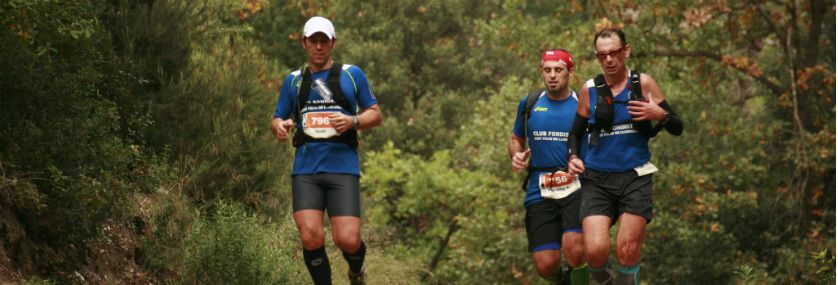Within the wide variety of brands and models of GPS Heart Rate Monitors & Sports Watches on the market and leaving aside the tastes, prices, ergonomics and functions common to the vast majority of them, I would highlight 10 utilities that can help a mountain runner to choose one or the other:
Altimeter and compass

Altitude, positive elevation gain and negative elevation gain are very relevant data in mountain races both in the previous preparation and in the same race or after training.
In the previous preparation of any race it is necessary to read well the relation between distance and elevation gain, since they will give us the keys of its hardness, approximate times, necessary material and race management.
In the race, having accurate elevation and altitude data will give us clues about the accumulated load and what we have left to finish. In addition, in case of confusion or poor visibility, the approximate altitude data will be of great help to us to orient ourselves and to know for sure where we are.
After the training session, being able to read the summary and the distance-elevation ratio will give clear evidence of the effort made and if we are carrying out each phase of the training in good conditions.
If we can set up a display with these three parameters (altitude, positive and negative elevation gain) the management of the forces in the race will be more efficient.
The option to switch the compass on or off will help you to orient yourself in the terrain and, together with a map of the area, complement your vision of the route.
Following a route
One of the greatest utilities of GPS watches is to follow a route that you have previously entered into the device.
In case you train in unknown areas, at night, alone or in very alpine races, the track can guide you in case of doubts or disorientation or simply for safety. In addition some devices allow you to activate or deactivate the route when you need it with the consequent saving of battery.
Return route
It is not used very often but when you need it, it is a great ally. In case of weather change, heavy fog or disorientation the safest option is to go back the same way until you reorient yourself. The back to start function activates the exploration mode of the watch and guides you without loss back to where you need it. When you find yourself in a situation like this and before panicking or making a mistake, it is appreciated to be able to activate it.
Once you have found the right path or safe zone, you can deactivate it again and continue in normal mode.
Button lock and watch mode
Using a single device for training and as a regular watch is very practical. And if it keeps a record of your workouts and gives you a summary of each session with relevant data, it allows you to have everything in one. The button lock is practical to avoid unintentional actions.
Configurable lighting
The watch that allows you to play with the lighting modes and adjust it to your needs widens the range of uses.
Among the usual light modes, one of the most practical is the switch mode, which allows you to turn the backlight on and off by pressing a button like a flashlight, especially during a night run. This mode allows you to take your time to clearly see the necessary data.
Given the battery drain of having the backlight on constantly, being able to turn it on and off whenever you want is a very useful feature.
Adjustable autonomy
There are some devices that allow you to set the autonomy of the watch, directly related to the satellite tracking accuracy setting. The more precision you demand from the watch, the shorter its duration will be and vice versa. In races where you estimate a longer duration and before running out of battery, it is very practical to be able to adjust this detail, balancing the performance of battery-GPS accuracy to your needs.
High GPS sensitivity-Fast localization

The GPS sensor and its high sensitivity will give you really accurate and very precise data every time. There are some watches that capture the location every second so the accuracy of the data is really high.
Also when you run in lush forests or between closed ravines it is important that the device keeps receiving a GPS signal and giving accurate data.
Something quite uncomfortable is waiting in the cold for the watch to locate your position and you can start running. Watches are becoming more sensitive and are picking up signals from the necessary satellites faster and faster. Some watches also remember your usual positions and thus reduce the time to locate you.
Configurable displays and good visibility
Configuring as many displays with as many parameters as you want in the different race modes in a simple way is something to keep in mind because it will suit your personal needs.
A clear display with easy-to-read data will ensure that you don't spend too much time looking up from the terrain. For this you will have to assess your preferences. In my case I usually configure some screens with one or two main parameters and other optional ones that appear when I need them by simply pressing a button.
There are models that allow you to configure different modes: mountain, race, training, follow a route,... in this way you can customize each mode with its displays and necessary data.
Submersible
It won't be the first time I've ruined a GPS watch by taking it in the shower or putting it in the washing machine.
Being waterproof is something very common in high-end watches of most brands but it is worth paying attention to this factor before choosing one or another.
It also gives you a lot of security when using it in any circumstance with risk of water or extends the range of use of the device to other sports, which makes it very complete.
Compatible with APP and mobile device connection
Given the widespread use of social networks there are brands that make it possible to connect the watch with your mobile device, so you can easily see the summary of your activities from your phone anywhere, without having to download them to your PC.
It is also very practical to make the watch compatible with some of the usual applications (Strava) among runners that allow you to share your workouts, routes, as well as being part of social groups.
Photos: ArkansasOutside.com I photo credit: Corremos com a Esclerose Múltipla via photopin cc

